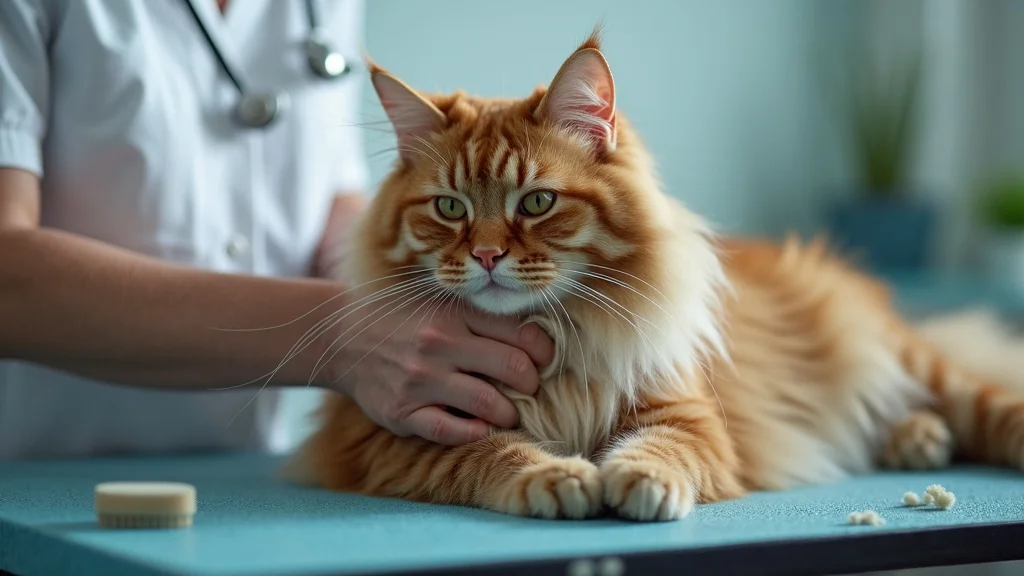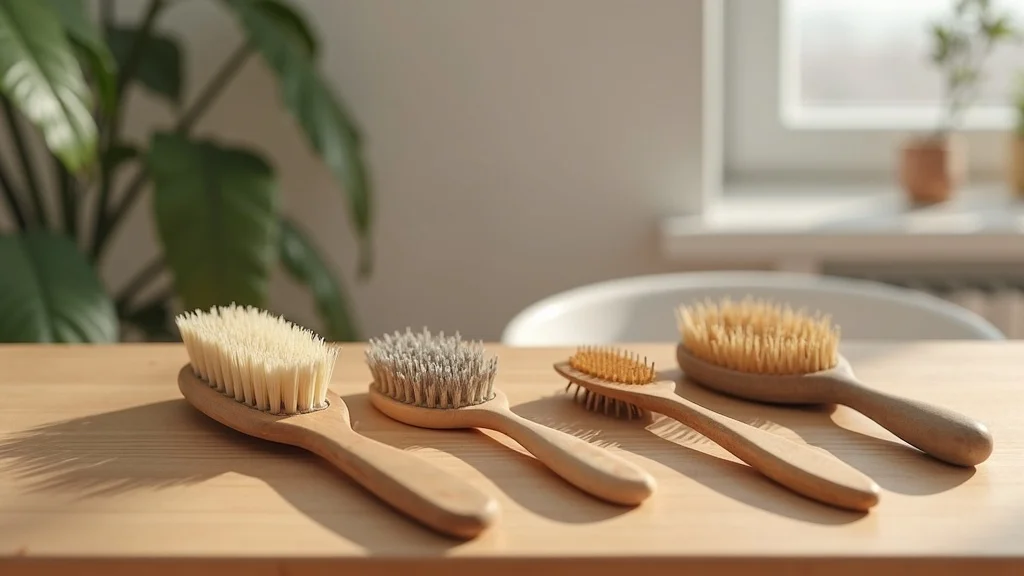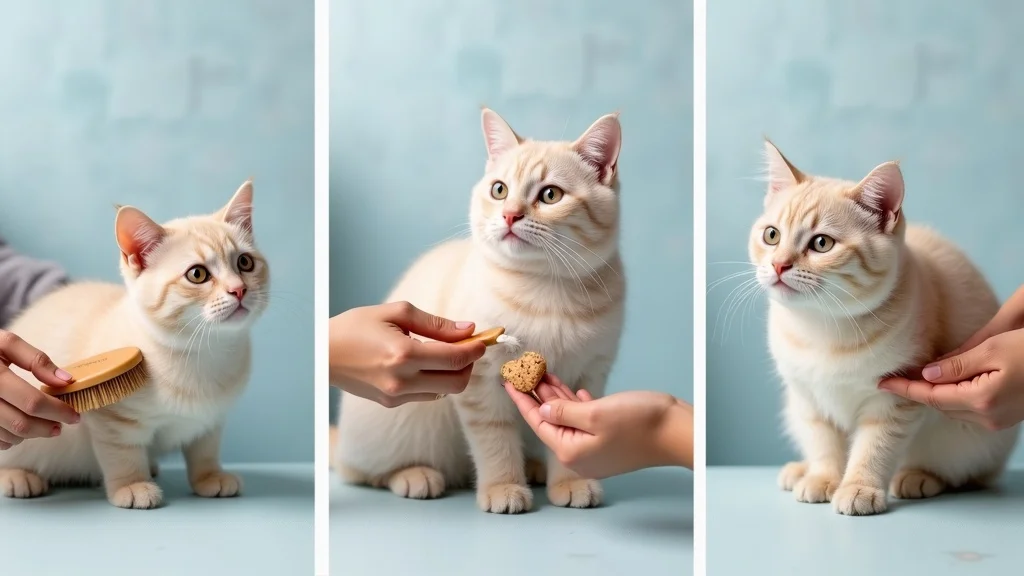Have you ever wondered if you’re brushing your cat’s fur as often as you should?Many cat parents think that cats “groom themselves,” but the truth is, your furry friend’s well-being and comfort may depend on more hands-on help than you realize. This guide unpacks exactly how often you should brush your cat’s fur—based on coat type, lifestyle, and expert advice—so you can keep your feline healthy, comfortable, and happy.
- Understanding how often should I brush my cat's fur based on coat type and lifestyle
- How cat grooming impacts your pet's health and comfort
- Tips, tools, and expert recommendations for brushing your cat
- Answers to common cat grooming questions
- Advice for handling different haired cats

How Often Should I Brush My Cat's Fur: The Importance of Regular Cat Grooming
Every cat owner wants their beloved companion to look and feel their best, but “how often should I brush my cat’s fur” is a question with answers that vary depending on your cat’s coat type, their activity level, and even their personality. Whether you’re caring for a sleek short-haired cat or a majestic long-haired cat, regular brushing is about much more than style—it’s about health, comfort, and happiness. Cat grooming isn’t only about keeping fur shiny; it’s your first defense against mats, shedding, and skin problems. Routine brushing removes loose fur, spreads natural oils across your cat’s skin, and prevents painful tangles. For indoor cats (who may shed year-round) and adventurous cats (who pick up more debris), the right grooming schedule makes a world of difference.
Experienced feline vets and groomers agree: most cats benefit from regular brushing tailored to their coat types and lifestyle. Not only does brushing your cat keep their skin and fur healthy, but it also makes grooming an enjoyable routine, not a dreaded battle! By the end of this article, you’ll understand how to create a positive experience each time you groom your cat—whether they’re short hair or long hair. Read on for step-by-step advice, expert tips, and essential tools that will make cat grooming a breeze.
Opening Inquiry: Are You Brushing Your Cat's Fur as Often as You Should?
"Regular cat grooming doesn’t just keep your feline looking beautiful—it’s an act of love that supports their health and happiness." – Dr. Lauren Carter, Feline Veterinarian
If you’re unsure whether your cat is getting enough grooming or you notice extra shedding, hairballs, or tangles, you’re not alone. Many pet owners underestimate the benefits of regular brushing and the impact it can have on both their cat’s appearance and their overall health. With so many tools and techniques available, understanding the right frequency for your cat is the first step to a routine that keeps your kitty comfortable every day.
Let’s explore the factors that influence how often you should brush your cat’s fur and why a consistent grooming schedule is a gift for both you and your feline friend.
How Often Should I Brush My Cat's Fur: Factors to Consider
Coat Type and Haired Cat Varieties
Your cat’s coat type is the biggest factor in deciding how often to brush. Cats come in a variety of haired cat categories: short-haired cats, medium-haired cats, and long-haired cats. Short-haired cats have smooth, sleek fur that lies close to the body; these cats may not look like they need much grooming, but regular sessions help remove loose hair and distribute natural oils for healthy skin. Medium-haired cats often have thicker coats with more volume, which means loose hairs can become trapped and cause tangles if not brushed out. Finally, long-haired cats require the most maintenance: their luxurious coats tangle easily, and mats can form quickly if left unattended.
- Short-haired cats
- Medium-haired cats
- Long-haired cats

Activity Level, Age, and Lifestyle: Their Role in Cat Grooming Frequency
A cat’s personality and daily routine can also change how often you should brush their fur. Active cats that spend time outdoors may pick up more debris and accumulate mats faster, especially if they have longer hair. Cats who are older or less active often groom themselves less efficiently, allowing loose hair and dead skin to build up. Even playful indoor cats may need extra attention to keep their coats shiny and free from tangles. Age plays a surprising role, too: older cats often need more grooming as they age because flexibility and self-grooming drop off. If your cat is shedding more than usual or seems to develop mats or oily fur, it’s a clue their grooming schedule needs a boost.
Monitor lifestyle changes, such as illness, surgery, or even seasonal shedding patterns, which can impact your cat’s grooming needs. In busy, multi-pet homes, setting aside time to brush your cat ensures they receive individual attention—even if their natural grooming would otherwise go overlooked. The key is regular, gentle sessions adapted to your pet’s needs, not a strict schedule that feels like a chore. By observing your cat’s behavior, coat cleanliness, and overall comfort, you’ll know when to pick up the bristle brush and give your furry friend extra care.
Brushing Your Cat for Health: Why Routine Matters
Brushing your cat regularly does more than keep them looking tidy: it supports their health in ways you may not realize. When you brush your cat, you remove loose fur, prevent mats and tangles, and catch signs of skin problems early—before they turn into bigger health issues. Cats that are brushed regularly are less likely to cough up hairballs or shed excessively around the house. For cats with allergies or sensitive skin, routine grooming can even reduce itchiness and irritation by spreading natural oils evenly over the skin.
A consistent grooming routine catches loose hairs before they end up in your carpets, clothes, or inside your cat’s stomach! This not only keeps your home cleaner but also promotes a bonding moment with your cat. When grooming becomes a calming ritual, cats often grow to love the attention. Regular brushing helps you monitor your cat’s health—allowing you to notice changes in the skin, new lumps, or tender spots that may need veterinary attention. In short, cat grooming isn’t a luxury—it’s a basic necessity for every caring cat parent.
| Type | Frequency |
|---|---|
| Short-haired cats | Once per week |
| Medium-haired cats | 2–3 times per week |
| Long-haired cats | Daily |
Brush Your Cat: Benefits of Regular Brushing
Controlling Shedding and Hairballs
One of the best reasons to brush your cat is to control shedding and reduce hairballs. Cats shed—sometimes a little, sometimes a lot—and when loose fur is left in the coat, it ends up on your furniture or forms hairballs in your cat’s stomach. Regular brushing helps remove loose hair before it can be swallowed, keeping your home tidier and reducing those unpleasant hairballs. This is especially crucial for medium and long-haired cats, who not only shed more but also struggle with tangles that trap even more fur. Even short-haired cats, who may seem low maintenance, will benefit from routine brushing to prevent loose fur from building up and reduce the amount of fur they ingest.
Brushing your cat is also a great way to limit the fur your vacuum picks up each week! By making grooming a habit, you protect both your cat and your home from the never-ending battle of shed fur. If you find clumps of fur around your home, or your cat is coughing up more hairballs than usual, it’s a sign to ramp up your grooming sessions. When carried out regularly, brushing helps reduce the amount of loose hair, limits hairballs, and promotes healthier, few-problem coats in cats of every variety.
Preventing Mats and Tangles, Especially in Long-Haired Cats
For long-haired cats, daily brushing is absolutely necessary to prevent mats and tangles—which can be both painful and dangerous. Mats often start as small knots but quickly become tight, pulling at your cat’s skin and causing discomfort or even infections if left untreated. Once a mat forms, it can be difficult (and sometimes painful) to remove, making prevention—through regular grooming—the best strategy. Cats with thick, fluffy, or double coats are at the highest risk and benefit from regular brushing more than any other group.
Brushing sessions for long-haired cats should be gentle but thorough, focusing on trouble areas like behind the ears, under the arms, and around the hind legs. By removing loose fur and breaking up small tangles before they form mats, you help your cat stay comfortable and avoid trips to the groomer or vet for shaving or treatment. Even medium and short-haired cats can develop tangles if their coats aren’t maintained, especially during heavy shedding periods or if they’re older and groom less frequently. Regular brushing helps all cats maintain sleek, mat-free coats that support their overall health.

Bonding Moments: Brushing Your Cat as Quality Time
Grooming isn’t just about maintaining your cat’s physical health—brushing your cat is a wonderful opportunity for quality time and deepening your feline-human bond. Many cats come to associate brushing sessions with love and comfort, especially if introduced with patience, treats, and lots of praise. Turn grooming into a positive experience by brushing in a quiet, comfortable spot, speaking softly, and rewarding your cat with gentle pets or their favorite snack afterward. Over time, your cat will look forward to these moments, associating the bristle brush or comb with your care and attention.
Bonding with your cat through regular grooming sessions can help nervous or skittish cats feel secure and increase their trust in you. As you brush, you can learn to read your cat’s cues, recognize when they’ve had enough, and adapt your approach for a relaxing and enjoyable routine. Many pet owners find that these moments become treasured rituals—and their cats feel (and look) better for it! Plus, regular brushing provides a chance to check your cat for signs of skin problems, lumps, or injuries that might otherwise go unnoticed.

Cat Groom: Choosing the Right Brush or Comb
Brush or Comb: Which Is Best for Your Cat’s Coat Type?
With so many grooming tools on the market, knowing whether to use a brush or comb depends entirely on your cat’s coat type. Short-haired cats typically benefit from a soft bristle brush or rubber grooming mitt, which removes loose hair without irritating the skin. Medium-haired and long-haired cats often need a combination of tools: slicker brushes to detangle and de-shed fur, pin brushes for fluffing up the coat, and wide-tooth combs for tackling knots and mats. Deshedding tools are excellent for both short and long-haired breeds during heavy shed periods to remove undercoat and reduce the amount of fur around your home.
- Slicker brush
- Bristle brush
- Pin brush
- Deshedding tool
Try different brushes and combs to find what your cat tolerates best—some cats prefer the gentle touch of a bristle brush, while others need the power of a slicker brush to get through their thick coat. Whichever tool you choose, make sure it fits comfortably in your hand and is designed for cats, not dogs, for maximum safety and effectiveness. When in doubt, ask your veterinarian or a professional groomer for recommendations based on your cat’s unique coat type and grooming needs.
How to Select the Best Cat Grooming Tools for Haired Cats
When picking grooming tools, consider your cat’s comfort and your ease of use. The best brush or comb for your haired cat is gentle enough not to scratch the skin but effective at picking up loose hair. For short-haired cats, rubber grooming gloves or soft bristle brushes do the job, quickly removing stray fur while being gentle. Medium-haired cats may require pin brushes to reach loose hairs trapped deeper in the coat, while long-haired cats greatly benefit from slicker brushes, combs, and even dematting tools for stubborn knots.
Look for ergonomic handles, easy-to-clean designs, and bristles that don’t break or snag hair. Periodically check bristle brushes for worn-down tips, which can irritate your cat’s skin. High-quality grooming tools last longer and make every grooming session a positive experience. Remember, comfort and safety always come first—never force a brush or comb through matted fur, and stop if your cat seems uncomfortable. With the right tools and approach, cat grooming becomes a simple, stress-free ritual your cat may come to love.

Step-By-Step: How to Brush Your Cat's Fur Effectively
- Prepare your grooming area
- Let your cat get familiar with the brush
- Gently brush your cat in the direction of hair growth
- Focus on common trouble spots (underarms, behind ears)
- Reward your cat after brushing
Start by choosing a quiet, cozy spot for your grooming session, placing a soft towel or mat to catch any loose fur. Before you brush your cat, let them sniff and investigate the tool, making the process less intimidating. Always brush in the direction of hair growth, moving slowly and carefully to avoid tugging or scratching the skin. Pay special attention to areas that mat easily, such as under the legs and behind the ears, and go gently over sensitive spots. Keep sessions short at first, focusing on making them a positive experience—offering treats and praise throughout. Consistency, patience, and gentle handling turn what could be a struggle into a bonding opportunity you both enjoy.

Brushing Your Cat: Troubleshooting Common Issues
How to Handle Mats in Long-Haired Cats
If you discover mats in your long-haired cat’s coat, remain calm and patient—never forcefully pull at mats or try to cut them out with scissors. Use your fingers to gently separate the mat, then apply a detangling spray designed for cats, if needed. Work a slicker brush or a wide-tooth comb through the mat, starting at the edges and advancing toward the center. If the mat is too tight or close to the skin (or your cat protests too much), schedule a visit with your groomer or veterinarian for professional removal. Regular brushing helps prevent mats from forming in the first place, but when they do appear, always prioritize your cat’s safety and comfort over removing the mat on your own.
For severe matting, do not attempt DIY removal—this can result in skin injury or a frightened, traumatized cat. Groomers have specialized tools and techniques to deal with extreme mats safely. Between professional visits, keep on top of regular brushing, and check your cat’s trouble areas often, especially during heavy shed periods or if your cat is aging and not grooming as much on their own.
Tips for Nervous or Reluctant Cats
Nervous or reluctant cats can learn to enjoy brushing with time and the right approach. Always start slow: introduce the grooming brush or comb gradually, letting your cat sniff and even play with it. Use brief, positive sessions—sometimes just a minute or two—followed by their favorite reward, like treats or playtime. Never force the issue; if your cat seems upset, take a break and try again another day. Associating brushing with enjoyable experiences helps to turn the process into a positive experience. Many cats who disliked grooming as kittens become fans once they discover brushing helps them feel better and itch less.
If your cat remains resistant, try a softer bristle brush or groom when your cat is already relaxed, such as after a meal or during quiet time. Use calm voices and gentle petting throughout. In some cases, enlisting help from a friend, professional groomer, or even asking your vet for advice can make all the difference in transforming grooming from a struggle to an enjoyable, routine part of your cat’s care.
Signs You Aren't Brushing Your Cat's Fur Often Enough
- Increased matting
- Excessive shedding
- Hairballs
- Dirty or oily fur
If you notice these warning signs, it’s time to increase the frequency and quality of your grooming sessions. Matting and tangles can lead to pain, skin problems, and even infections. Excess shedding and hairballs are your cat’s way of telling you they’re ingesting too much loose fur. Dirty or oily coats signal an imbalance in natural oils or a problem with self-grooming, often seen in older cats or those with mobility issues. Consistent brushing is the most effective solution for all of these issues—just a few minutes each day can make a world of difference for your cat’s health and comfort.
Watch as an expert demonstrates brushing frequency for short-haired, medium-haired, and long-haired cats. See tips in action and learn how to make grooming a positive experience at home.
People Also Ask
Is it okay to brush your cat every day?
Yes, it’s perfectly safe to brush your cat every day, especially if they’re long-haired or prone to tangles and shedding. Daily brushing removes loose hairs, prevents mats, and offers bonding time. For short-haired cats, daily brushing isn’t necessary but won’t harm them if they enjoy it; just be gentle and attentive to their body language for the most positive experience.
Do cats feel better after you brush them?
Most cats feel refreshed and more comfortable after a grooming session. Brushing removes loose fur and dirt, spreads natural oils, and massages the skin, which many cats enjoy. Regular grooming also reduces the discomfort of tangles and mats, helping your cat feel their very best while deepening your bond through positive interaction.
How much hair should I brush off my cat?
The amount of hair you brush off varies by breed and season. During heavy shedding periods, especially in spring and fall, expect to see more loose fur—sometimes large clumps from long-haired cats. For most cats, a visible but moderate amount of hair in the brush is normal. If you notice excessive fur coming out, increase brushing frequency to stay ahead of hairballs and shedding.
When should I brush my cat's fur?
Brush your cat whenever their coat starts to look dull, shed excessively, show tangles, or if your cat is shedding more than usual. For long-haired breeds, aim for daily sessions. For others, weekly to a few times weekly is typically enough. Choose a quiet, relaxed time of day for the best results—after meals or when your cat is naturally calm is ideal.
See side-by-side demonstrations of the best grooming tools and techniques for short-haired, medium-haired, and long-haired cats. Discover which brush or comb best suits your cat’s coat type and get practical, hands-on advice to make grooming easier for you both.
Frequently Asked Questions (FAQs) about How Often Should I Brush My Cat's Fur
-
Q: What happens if I don’t brush my cat’s fur often enough?
A: You may see mats, tangles, increased shedding, and hairballs. Neglected grooming can cause skin problems, discomfort, or even infections, so regular brushing is essential. -
Q: Do indoor cats need brushing as often as outdoor cats?
A: Yes—indoor cats still shed and can develop mats. They may shed year-round due to indoor heating, requiring consistent grooming just like outdoor cats. -
Q: How do I make brushing more enjoyable for my cat?
A: Use gentle brushes, start slow, reward often, and create a calm environment to help your cat see grooming as a positive experience. -
Q: Can kittens be brushed?
A: Yes, starting grooming early gets kittens used to the process—use very soft brushes and keep sessions brief.
Brushing Your Cat: Key Takeaways
- Brush frequency depends on coat type
- Appropriate grooming prevents health issues
- Right tools make grooming easier
- Brushing supports a strong human-cat bond
Keep Your Cat’s Coat Shining: Next Steps
Want more tips, stories, and pet care guides delivered straight to your inbox? Join our monthly PawPress newsletter and stay in the loop with the latest for your furry friends. 🐾 Subscribe now — your pets will thank you! https://pawpressnews.com
Actionable Takeaway: Brushing your cat regularly, using the right tools for their coat type, is the best way to ensure a healthy, mat-free, and happy feline—while building a bond that lasts a lifetime.
Regular grooming is essential for your cat’s health and comfort. For short-haired cats, brushing once or twice a week helps remove dirt, dead skin, and loose fur, promoting a healthier coat. (drlogy.com) Long-haired cats, however, require daily brushing to prevent mats and tangles, which can lead to discomfort and skin issues. (douxo.com)
Incorporating regular brushing into your routine not only maintains your cat’s coat but also strengthens your bond. If you’re serious about keeping your feline friend healthy and happy, these resources will provide you with the necessary guidance.
 Add Row
Add Row  Add
Add 




Write A Comment